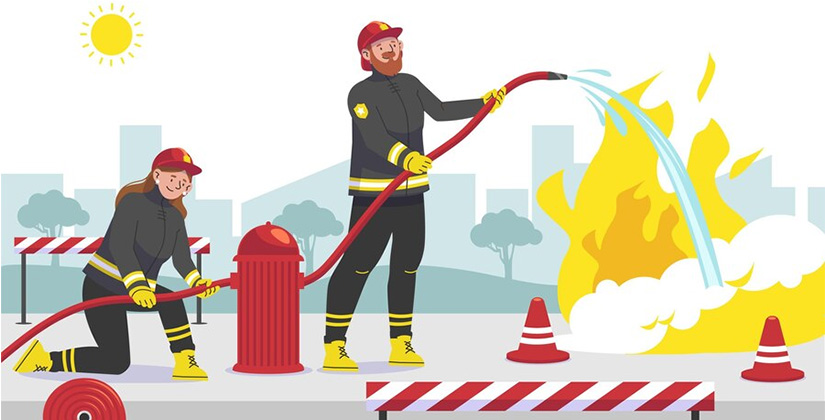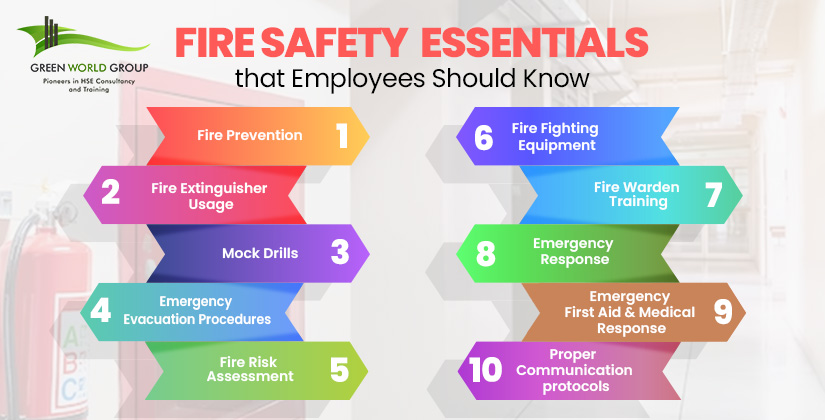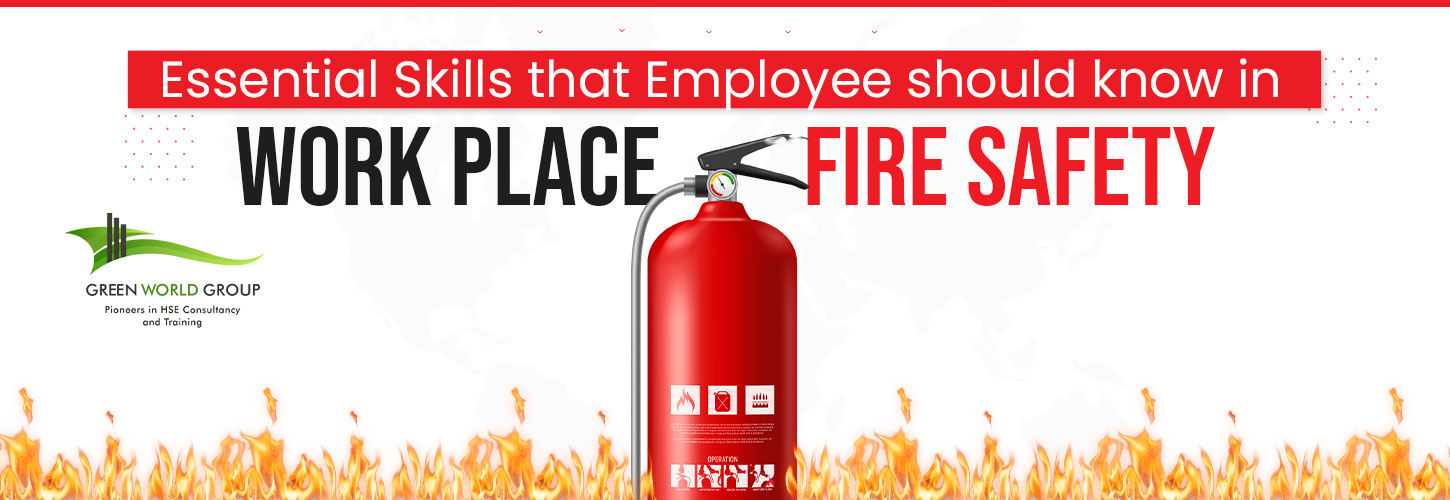Every year Workplace fires result in numerous injuries, fatalities, property damage, and financial losses. According to the NFPA (National Fire Prevention Association) report, the majority of fires incidents (71%) happen in industrial and manufacturing properties leading to an average of 3 civilian deaths, 38 civilian injuries, and $265 million in direct property damage each year. These statistics underscore the critical need for fire safety measures and training to mitigate the devastating impact of such incidents.
What are the major consequences of workplace fire?
Workplace Fire not only affects the safety of employees but also the stability and reputation of your business. The most critical consequences are,
- Injuries & fatalities: Ranging from burns to smoke inhalation, often causing long-term physical and emotional suffering.
- Property Damage: Extensive property damage creates a financial burden, and recovering is a time-consuming & costly process.
- Business interruption: Halts the business operations, resulting in lost revenue and potential layoffs, contributing to the economic fallout.
- Reputational Damage: Customers and clients may lose trust, and your community may view the company as a safety risk.
- Loss of Intellectual property: Valuable Data and records stored in the computers and paper documents get destructed.
Importance of Workplace Fire Safety Training

As per the recent statistics published by Fire and Safety Australia, More than 50% of employees do not know about the correct evacuation procedures fire extinguisher usage during fire emergency . Only 13% of employees are aware of the different types of fire extinguishers and their appropriate use for specific classes of fires.
Proper training can bridge these confidence gaps, equipping employees with the skills and preparedness required to respond effectively in fire emergencies, ultimately ensuring their safety and that of their colleagues.
What are Essential things that employees should learn in Fire Safety Training?

- Fire Prevention: Techniques to prevent fire, such as safe storage of flammable materials, proper waste disposal, and electrical safety to minimize the risk
- Fire Extinguisher Usage: Fire extinguishers and their appropriate use for specific types of fires (Class A, B, C, etc.), with hands-on practice
- Mock Drills: Practice fire drills to understand evacuation routes, assembly points, and emergency preparedness to respond to fires.
- Emergency Evacuation Procedures: Update evacuation procedures, including the use of emergency exits, assembly areas, and techniques for assisting individuals with mobility issues.
- Fire Risk Assessment: Identify potential fire hazards in the workplace and take proactive measures to reduce the risk.
- Fire Fighting Equipment: Be familiar with the location and proper use of fire-fighting equipment such as fire hoses, fire alarms, fire blankets, and sprinkler systems.
- Fire Warden Training: Designated fire wardens should undergo training to understand their roles in emergency situations
- Emergency Response: React immediately during a fire incident, from alerting others to following evacuation procedures.
- Emergency First Aid & Medical Response: Perform first aid to fire-related injuries like burns or smoke inhalation until professional medical help arrives.
- Proper Communication protocols: Raise alarms, make emergency calls, and convey critical information clearly.
Benefits of Fire Safety Training
- It helps the employee to take quick response in the time of emergencies.
- It equips employees on how to prevent accidents with proper use of equipment.
- It allows businesses to maintain operational continuity even in the face of fire emergencies.
- It offers reduced insurance premiums to businesses with robust fire safety measures.
- Reduces Employee downtime and attracts customers, clients, and partners who prioritize safety in their dealings.
Prevent your workplace Fires with proper Employee Training
Providing fire safety training to employee is a proactive approach to minimize the risk of workplace fires.
At Green World, Your Safety is our special concern, we understand the importance of fire safety in the workplace, and we are committed to ensuring that every employee is well-prepared to prevent and respond to fire emergencies.
Your safety is in your hands – Enroll, learn, and lead….!!
Test Your Workplace Fire Safety Knowledge, Pick the Correct Answer
Why is it important to know the location of fire exits in the workplace?
- A) To avoid colleagues
- B) To find a shortcut
- C) For emergency evacuation
- D) For break time
C) For emergency evacuation
Knowing the location of fire exits in the workplace is crucial for emergency evacuation. In the event of a fire or any other emergency, quick and safe evacuation is paramount to ensure the well-being of all individuals in the building. Fire exits provide the most direct and efficient routes to escape, reducing the risk of injury and facilitating the orderly movement of people to designated assembly points. This knowledge is a fundamental aspect of workplace fire safety, helping to mitigate potential dangers and protect the lives of employees and visitors.













